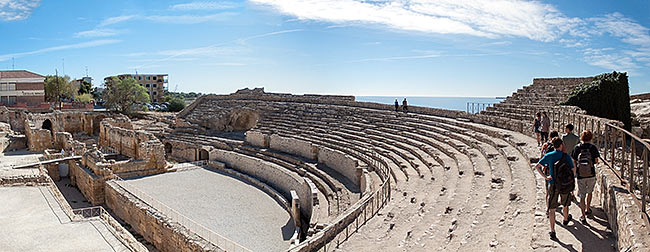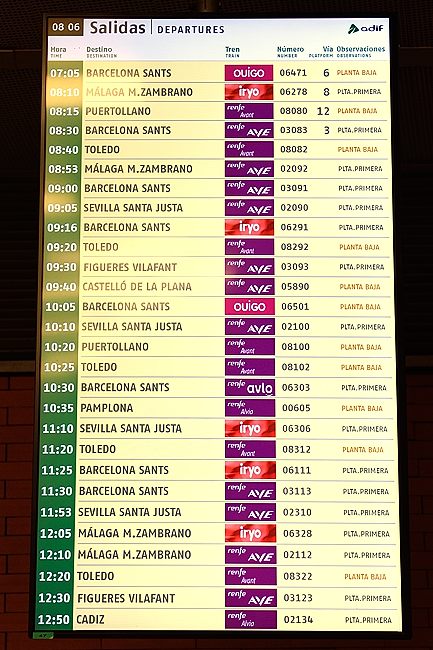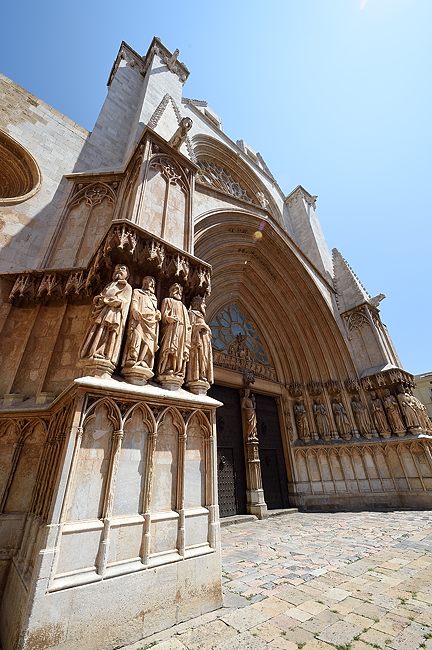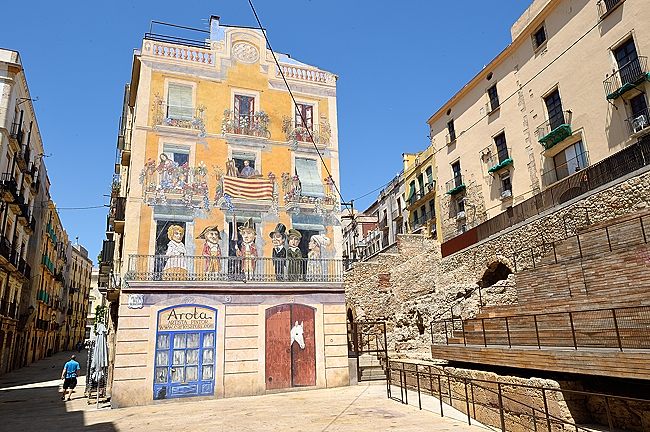Tarragona is a Catalan port city near the high-speed rail route linking Barcelona and Madrid. The ancient Romans called it Tarraco, built a shore side amphitheatre and a circus for chariot races. Tarragona has beaches, a touristy old town and a cathedral, one of Catalonia’s largest.
I hankered for a visit, and also craved a trial ride aboard Iryo, which debuted high-speed Spain rail service last November. My inner masochist also may have longed to repeat my 2019 blunder of booking an August day trip without a respectful study of the weather forecast. Consequences rued below.

First: what’s a Iryo?
The high-speed trains gushed about in posts past were all operated by Renfe, Spain’s state-owned national passenger railway company. In 2021, Spain opened its tracks to Renfe competitors. The first was France’s Ouigo, which competes mostly on price. Iryo, in contrast, also hopes to compete on ride experience, with first class service tiers and gourmet-ish dining options for rail-riding foodies.

I splurged on Infinita Bistró tickets. These include Gran Confort XL seats in the first class car, and wannabe gastronome meals. My online ticket purchase was grief free, even with a U.S. credit card, with one exception: iryo.eu wouldn’t let me pick a desired seat. ¡No me cortes el rollo! Your shamelessly persnickety blogger called Iryo for a seat reassignment, so I might wiggle a contented rump in the single seat shown and sip a cortado while watching Spain scenery zip by at 290 km/h +. Transit geek Valhalla!

Iryo public relations might appreciate an insincere gush about the food. Sorry, guys; this blog is non-commercial. I’d rate my Infinita Bistró meals as a shallow notch above a good airline meal, with irritatingly skimpy portions. I could have had as many drinks as desired, though, and service was excellent.
As for the experience at the train station: the shot below shows the departures screen I saw when I arrived at Madrid’s Atocha rail hub.

See the mix of Renfe, Iryo and Ouigo rides? If you arrive with a ticket, boarding an Iryo shouldn’t be any tougher than boarding a Renfe. Aggregator web site thetrainline.com allows travelers to compare prices and travel times.
I can gush unreservedly about Tarragona. Two thumbs up! Three thumbs, if I were a lemur. Well-worth visiting! The cathedral, the old town, the circus, the amphitheatre, the beaches, the Casa Museo Castellarnau, and the Balcón del Mediterráneo, affording spectacular views of the eponymous sea.

But not on a scorcher in August. It is one thing to brave dog day temps for a two block stroll between metro and climate-controlled café, another to endure the same for an all-day tramp under a pitiless sun. I recognized my mistake by the time I rounded onto the Rambla Nova from the bus station, spent most of the day trying to compensate for it, like a boxer trying to get through a bout with a bad rib. I clung to shadows, dawdled in cool places, and, at afternoon’s end, practically melted onto a bench by the waterfront Balcón, overlooking the amphitheatre. It was a bit cooler here.

Where will I go in August, ’26, if determined to repeat this mistake every three years? Abu Dhabi? Riyadh?
I mentioned a bus station.
You won’t have to eyeball a Tarragona map long to spot Estació de Tarragona on the waterfront (especially with a helpful link), and you’ll be forgiven for assuming that all Tarragona trains must stop there.
Alas, not so. The high speed trains stop at Camp de Tarragona, a middle-of-mostly-nowhere whistle stop in the Tarragona hinterlands. The rail-riding Spain tourist will face a similar predicament when researching train travel to Cuenca or Segovia. The high-speed lines serve stations on the outskirts.
So how do you get from Camp de Tarragona to visit-able, touristy Tarragona? Many would board a taxi. Purists like me will opt for a bus, operated by Planas, which links Camp de Tarragona to the above-mentioned bus station.
I don’t remember what I paid. Wasn’t much. I do remember that I could pay in cash when boarding at Camp de Tarragona, but had to buy a ticket inside the bus station at the Planas ticket window for the return trip. Figúrate.

I really like those wide-angle portrait shots.
Thank you!